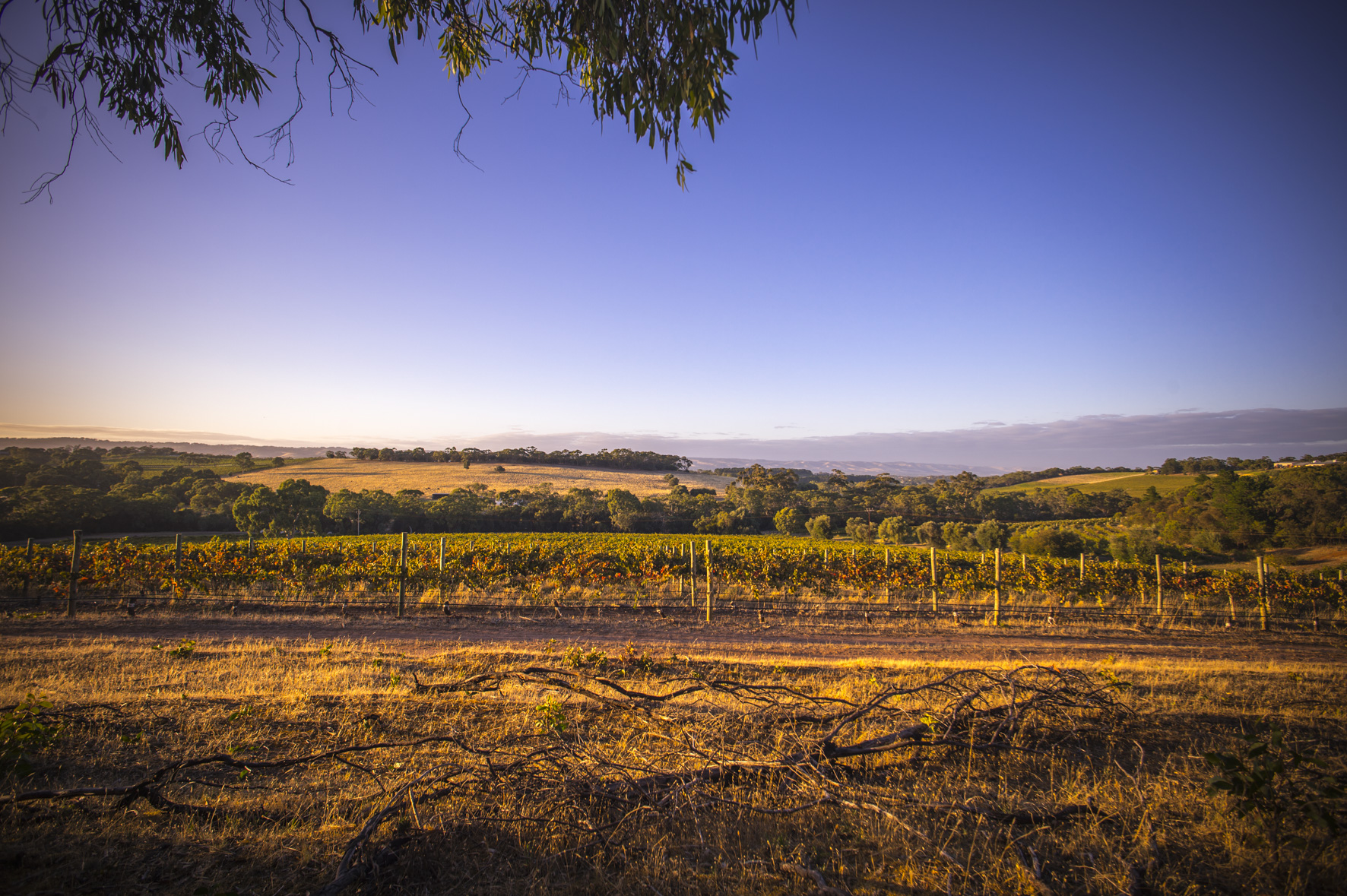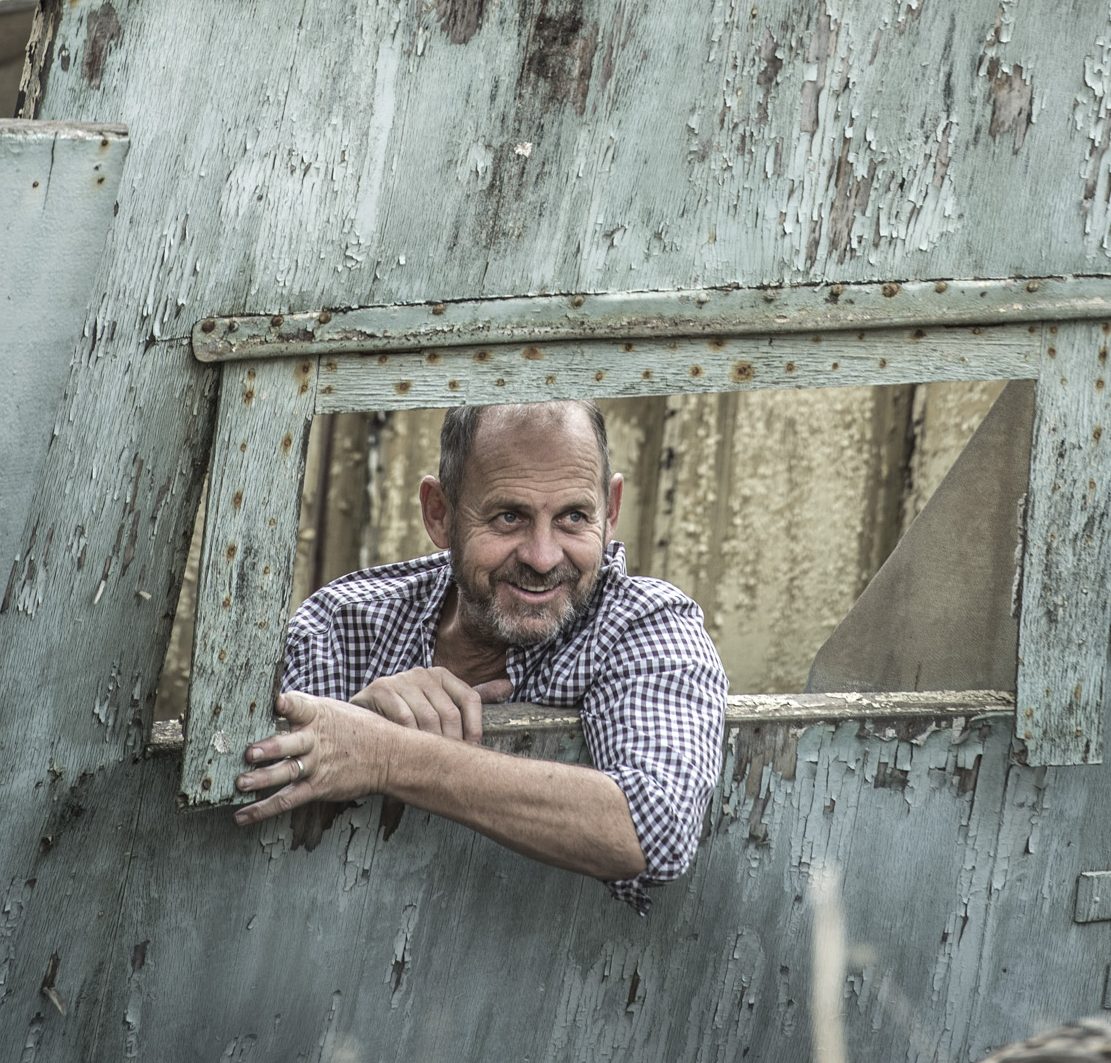 When Stephen Pannell was a boy of 15 he found an old ship’s bell while diving off the end of Busselton jetty in Western Australia. It was the bell for the SS Koomilya, a ship carrying hardwood from Western Australia to Adelaide. The word Koomilya means “woman” in Port Lincoln Aboriginal dialect. This wine is about the curiosity that’s driven Steve from boy to man; about his journey to modern-day McLaren Vale and this vineyard, the muse that enchants him among ancient soils, bush and ocean.
When Stephen Pannell was a boy of 15 he found an old ship’s bell while diving off the end of Busselton jetty in Western Australia. It was the bell for the SS Koomilya, a ship carrying hardwood from Western Australia to Adelaide. The word Koomilya means “woman” in Port Lincoln Aboriginal dialect. This wine is about the curiosity that’s driven Steve from boy to man; about his journey to modern-day McLaren Vale and this vineyard, the muse that enchants him among ancient soils, bush and ocean.
You’ll find it at the end of Amery Road, on a beautiful 80-acre property established in the late 1800s. There are 30 acres under vine, and the vineyards are surrounded by native bush land, almost nestled amid the forest, which is important in moderating the climate. This mesoclimate, allied to three distinct soil types and geology dating back 520 million years, gives this place a unique geological and viticultural foot print. This is Koomilya.
 This momentous release is the realisation of a long-cherished dream for Steve, who fell in love with this heavenly spot as a young winemaker. A couple of decades later he managed to purchase his piece of viticultural paradise. These wines are a culmination of his years spent delving into the mystery of wine, gleaning wisdom from other great winemakers and digging into the secrets of their place. All this time there’s been no let-up in his restless inquiry into his own surroundings and what he can do (or, more often, not do) in order to create a better wine.
This momentous release is the realisation of a long-cherished dream for Steve, who fell in love with this heavenly spot as a young winemaker. A couple of decades later he managed to purchase his piece of viticultural paradise. These wines are a culmination of his years spent delving into the mystery of wine, gleaning wisdom from other great winemakers and digging into the secrets of their place. All this time there’s been no let-up in his restless inquiry into his own surroundings and what he can do (or, more often, not do) in order to create a better wine.
“These wines have strength, intensity and glorious grape tannins that wind the palate together, almost like a double helix,” says Steve. “The complex structure pulls you straight through. On the nose they have a unique characteristic which can’t be clearly identified, but can only be described as Koomilya. They illustrate what I’m hoping modern McLaren Vale Shiraz will be, which harks back to a tradition of what McLaren Vale Shiraz was, without all the artifice of winemaking.”
“Limousine-like length and luxury feel.” – Nick Stock
“Lots of personality. Appetising and lively.” – Jancis Robinson
“The ultimate ‘look, no hands’ approach… Will be prodigiously long lived.” – James Halliday
2014 S.C. Pannell Koomilya Shiraz RRP $70
Summer conditions were significantly warmer than average with two heat waves through January and February. Timely rain in February rehydrated the vines and freshened the fruit. The rain also brought with it cooler daytime temperatures which allowed the fruit an extra couple of weeks of hang time for ripening.
A blend of three Koomilya Shiraz blocks, the majority of which is sourced from non-clonal Shiraz grafted on Gewürztraminer (GT Block). This block was planted in 1970, and grafted in the early 1990s. The remaining Shiraz was sourced from the Mulberry Block & Spider Block, planted in the early 2000s with clones sourced from 130+-year-old Hardy Shiraz (Upper Tintara), the neighbouring vineyard. Hand-harvested on 24th February; GT Block 5.26 tonnes (two fermenters), Bob’s Block 4.1 tonnes (one fermenter), Mulberry Block 2.5 tonnes (one fermenter). Final blend of 44% GT Block, 35% Spider Block & 21 % Mulberry Block. Fruit spent 15 days on skins in open-top fermenters before being pressed off, with the hard pressings removed to give a juice yield of approximately 40 litres a tonne. The wine was naturally fermented and transferred to stainless steel tank for 28 days, then racked into French vats (4,500-litre & 2,500-litre), and two 500-litre French puncheons. Here they underwent malolactic fermentation, before being racked out and left. 852 dozen bottled on the 23rd of February 2015, after spending a total of 10 months in oak.
2013 S.C. Pannell Koomilya DC Block Shiraz RRP $110
A dry winter and spring leading into vintage 2013, and effectively no rainfall for three months from December. It was also notable for being a warm summer. Due to the dry conditions there were small crops and small berries, but the fruit was extremely clean and showed great quality.
Single-block Shiraz from vines of approximately 80 years of age. Hand-harvested on 21st February. A total of 4.54 tonnes spent 13 days on skins. This is the most tannic block on the vineyard so it didn’t need any more time. The hard pressings were removed, giving a juice yield of approximately 40 litres per tonne. Transferred to stainless steel until the middle of May before being moved to a 2,500-litre vat and one puncheon. 351 dozen bottled on 8th December 2014, spending a total of 18 months in oak.
Blackish crimson. Punchy and intense. But not sweet: treacle and balsam, succulent with lots of freshness. Dry finish and a sleeping giant. Not dry or drying. Lots of personality. Appetising and lively. 14%. 17.5/20 Jancis Robinson
Deep earthy and almost Italianesque in its savoury aura of aromas, some dried rose petals too. Liquorice, stony notes and a dark dried plum blackberry and succulent tannins wrapped in elixir-like dark plum fruits. Supple and rich with a long trail of polished tannin that has a deeply lustrous shine. Limousine-like length and luxury feel. Fine now and will improve for 20+ years. Best after 2020. 96 points. Nick Stock, jamessuckling.com
The ultimate ‘look, no hands’ approach: crush and press the grapes into a five-year-old, 2700-litre vat, leave it strictly alone for 17 months, then bottle it. Deeply coloured, this is 100% full-bodied, with multiple layers of black fruits and ripe tannins blotting out everything else except bitter dark chocolate. Will be prodigiously long lived. 95 points. James Halliday
